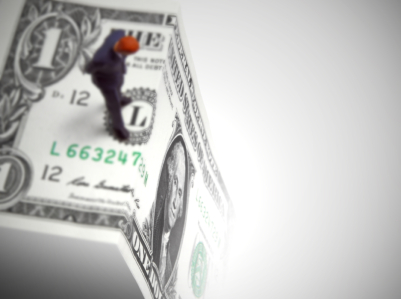By Kyle Tetting
Let’s get the technical part out of the way. I’m frequently asked, especially recently, how we know we’re in a recession.
Casual observers have a general idea of the simple rule of thumb: Two consecutive quarters of negative growth in gross domestic product. But to be technical, we aren’t officially in a recession until the National Bureau of Economic Research (NBER) says we are in a recession. And, while GDP growth is a consideration, the NBER looks at the pace of broad economic activity over the span of months in making their determination.
I bring up the technical definition as it reminds me just how irrelevant the actual pronouncement may be for our expectations.
Short-term, market fluctuations can hang on every word of the Federal Reserve, investment banks and other prognosticators. As a result, a few errant comments by the Fed or recession predictions by bankers have a tendency to roil stocks, and that has certainly been one of the driving forces behind recent volatility.
Frequently Asked Questions
Determination of the February 2020 Peak
Business cycle dates (back to 1854)
Unfortunately, questions about the timing and magnitude of the next recession take focus away from what truly matters. After all, we know the next recession is coming. They always do. It’s why we prepare balanced portfolios designed to navigate periods of prolonged weakness. You need only look at the financial crisis to see how well staying the course worked beyond the immediate pain of the last great recession.
Rather than trying to time the when or predict how bad it’s going to get, the conversation about recession and market decline may be better served focusing on what comes after. That is especially critical amid what has been a steep decline for stocks. Moving from overvalued to fairly valued, the longer-term outlook for stocks suddenly looks a bit more attractive.
Of course, the price declines that put stocks on sale have been challenging, but those declines are also forward-looking. Investors don’t wait for the NBER to proclaim a recession or some other entity to say stocks are challenged. Instead, they anticipate the change and often overreact. As a result, the pain we’ve seen so far this year may very well be reflective of economic slowing, even if we don’t officially enter recession any time soon.
The remaining question is just how bad it has to get before it gets better. Recent support around current price levels for stocks suggests prices may be firming, though plenty of uncertainty remains. However, with a long-term view, it’s difficult to feel bad about paying a fair price for stocks, even if prices go down further from here.
Lost in our conversation on the stock market is just how important bonds have become as part of the long-term answer. With bond yields incredibly low after the financial crisis, bonds contributed very little to the return of a balanced portfolio. We counted on stocks to do the heavy lifting for much of the last 10 years.
To put some numbers behind that, over the last 10 years, bonds accounted for a little more than 10% of the total return of a 50/50 portfolio of U.S. stocks and bonds. The reason: The return for the Bloomberg U.S. Aggregate Bond index over the 10 years that ended May 20, 2022 was just 1.7% while stock returns were exceptional.
More articles and videos from Kyle Tetting on Money Talk
Unsurprisingly, the 10-year return for bonds over that period closely matches the yield on a 10-year U.S. Treasury bought 10 years ago. With yields now a full percentage point higher, our expectations for the next 10 years are higher as well. Even if stocks struggle for a bit, the outlook for bonds has risen.
The remaining challenge has been some near-term pain in bonds. As interest rates rise, existing bonds issued at lower rates look less attractive and prices decline. But bonds have a feature not shared by stocks: Maturity at par. As long as the issuer remains solvent, bondholders are paid back the par value of the bond when it matures. In other words, we know what these bonds should be worth, and the current pain only makes bonds more attractive going forward.
We are operating in an environment where the common wisdom seems to be the Fed will either be too aggressive or continue to be not aggressive enough. Stall the economy into recession through rate hikes and balance sheet unwinding, or let inflation run rampant and disrupt consumers’ purchasing power. While such outcomes are possible, investors may be underestimating the Fed’s abilities.
Recession is a natural part of the business cycle, and while the Fed may eventually cause the next one, balanced investors are prepared for what that brings.
As bonds have fallen in price, they become more attractive for the return they can provide, not just the stability they offer. Similarly, just as stocks have fallen over fears of the unknown, they may rise long before we’ve been given the all-clear. Rather than try to predict the timing and magnitude of these uncertainties, balance continues to provide the necessary courage to stay the course.
Kyle Tetting is president of Landaas & Company.
Learn more
Recession in the rearview, what’s next? by Kyle Tetting
Recession’s not over till the NBER sings, by Joel Dresang
Recessions: Uncertainty suggests balance, a Money Talk Video with Kyle Tetting
How to handle fears of recession, a Money Talk Video with Bob Landaas and Kyle Tetting
Investors and the business cycle, a Money Talk Video with Dave Sandstrom
(initially posted May 26, 2022)
Send us a question for our next podcast.
Not a Landaas & Company client yet? Click here to learn more.
More information and insight from Money Talk
Money Talk Videos
Follow us on Twitter.
